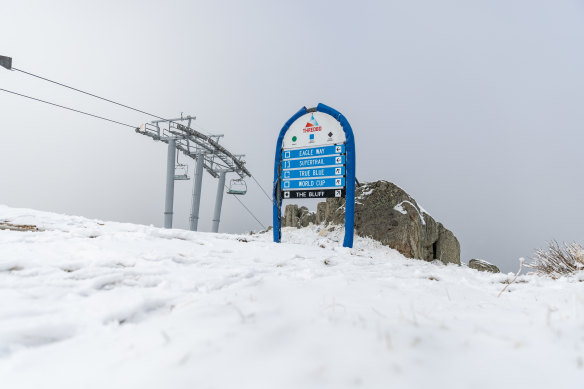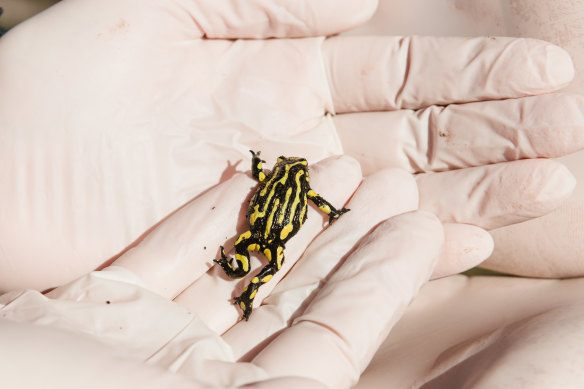
In NSW, the season at Perisher would decline from 117 days to 101 days by 2050 and Thredbo from 111 days to 96 days under a low-emissions scenario. Even in a mid-emissions scenario, the season would still last a few months.
In Victoria, Falls Creek would shrink from 109 days to 95 days in 2050 under a low-emissions scenario or 91 days under a mid-emissions scenario. Mount Buller would fare much worse, declining from 93 days to 70 days in 2050 under the low-emissions scenario and 58 days under the mid-emissions scenario.

Thredbo is ready for the beginning of the ski season this weekend.
Lake Mountain, the closest resort to Melbourne, popular with families for toboggan runs and snow play as well as cross-country skiing, would decline sharply even with a low-emissions scenario: from 59 days to 24 days by 2050.
Under the low-emissions scenario, the big Victorian resorts would have longer seasons by 2080 than in 2050, showing the potential repair of the climate.
The high-emissions scenario means the entire industry will snowplough off a cliff between 2050 and 2080, with the ski season shrinking to zero days at many resorts. The higher-altitude resorts of Mount Hotham and Charlotte Pass would be the sole survivors, with 18 days and 12 days, respectively.
Snow cover in the Australian Alps reduced by 30 per cent between 1954 and 2012, and the length of the ski season contracted by 17 to 28 per cent across most resorts, the research says.
Backhouse has noticed the snow has become less reliable over the past decade as well.
“What we’re really seeing is a kind of derailing of our winters, and they’re becoming more sporadic and harder to predict,” Backhouse said. “That has massive, wide-reaching implications across the whole industry and for the communities.”
Loading
Australian Ski Areas Association chair Noel Landry said Australian resorts were world leaders in embracing new technology and making year-round investments to adapt to and mitigate against seasonal variability.
“From grooming to snowmaking, Australian ski areas are some of the best in the world at snow management, which is why skiers and snowboarders at Australian resorts are, in general, enjoying more days on the slopes, not less, compared with 40 years ago, despite the challenges of climate changes,” Landry said.
Backhouse said snowmaking offered a buffer but was expensive to build and run, and could only be used on the most accessible slopes.
Less snow would also damage the ecology of the Australian Alps, which extend over 1.6 million hectares of public land. The High Country, with its wetlands, bogs and fens, is home to 31 endemic plant species and endangered animals such as the mountain pygmy possum and the southern corroboree frog.

Corroboree frog species are declining amid climate change, diseases and invasive species. But a breeding program is hoping to help keep their populations stable.Credit: James Brickwood
Professor Adrienne Nicotra, the report co-author and director of the Australian Mountain Research Facility, said climate change would mean less precipitation in the mountains overall and less of it falling as snow.
Loading
“Snow is a great way of sort of saving up water for later, while rain just rushes through the system quite quickly … and increases the risk of erosion,” Nicotra said.
Nicotra said the die-off of snow gums was concerning because trees captured some of the moisture in the air from fog that would otherwise blow over and be taken elsewhere.
The research says less snow would also reduce electricity production at the Snowy Hydro scheme and in-flows into the Murray Darling basin. The Australian Alps provide nearly a third of the basin’s annual flows.
Get to the heart of what’s happening with climate change and the environment. Sign up for our fortnightly Environment newsletter.









 Add Category
Add Category